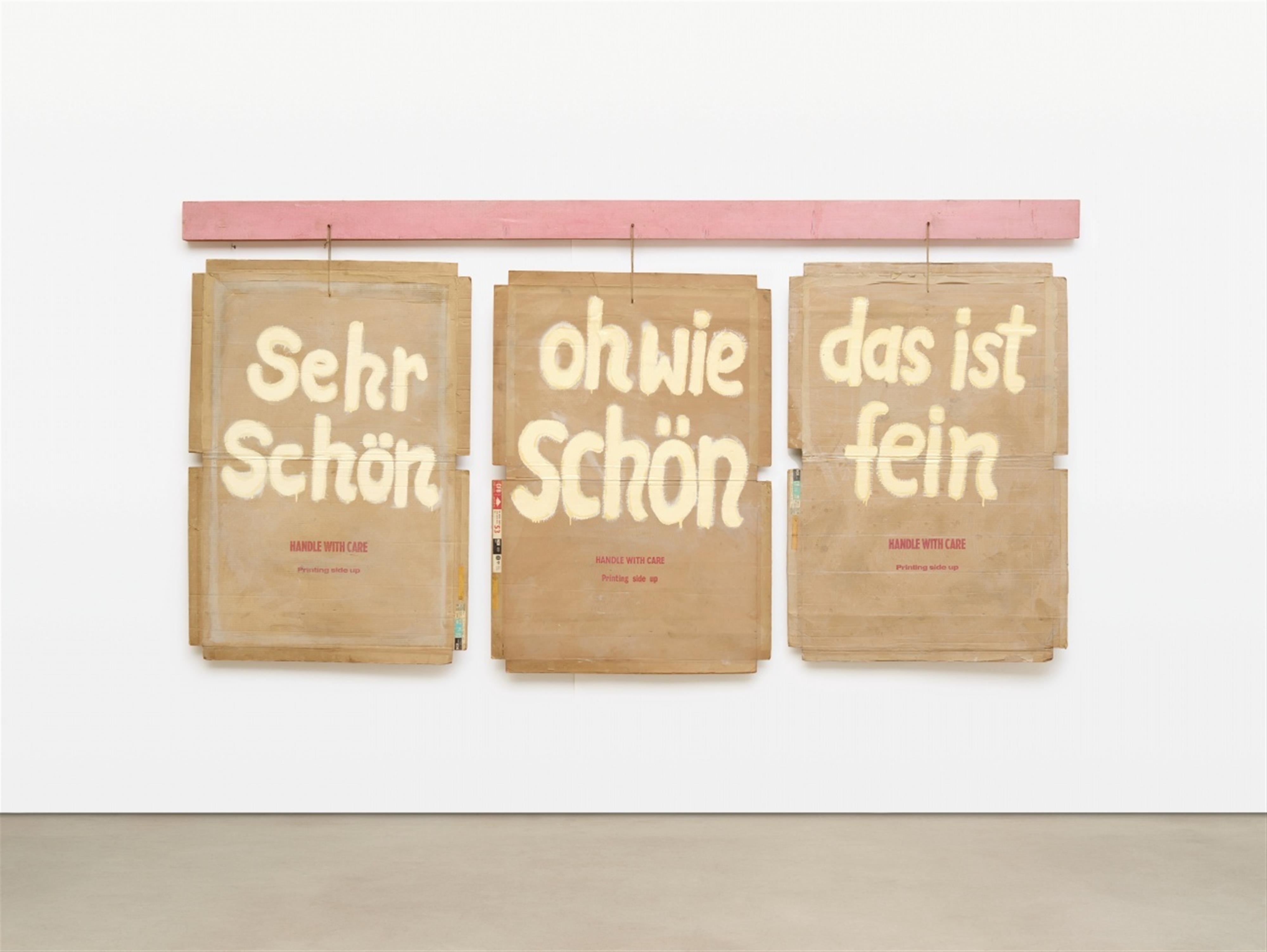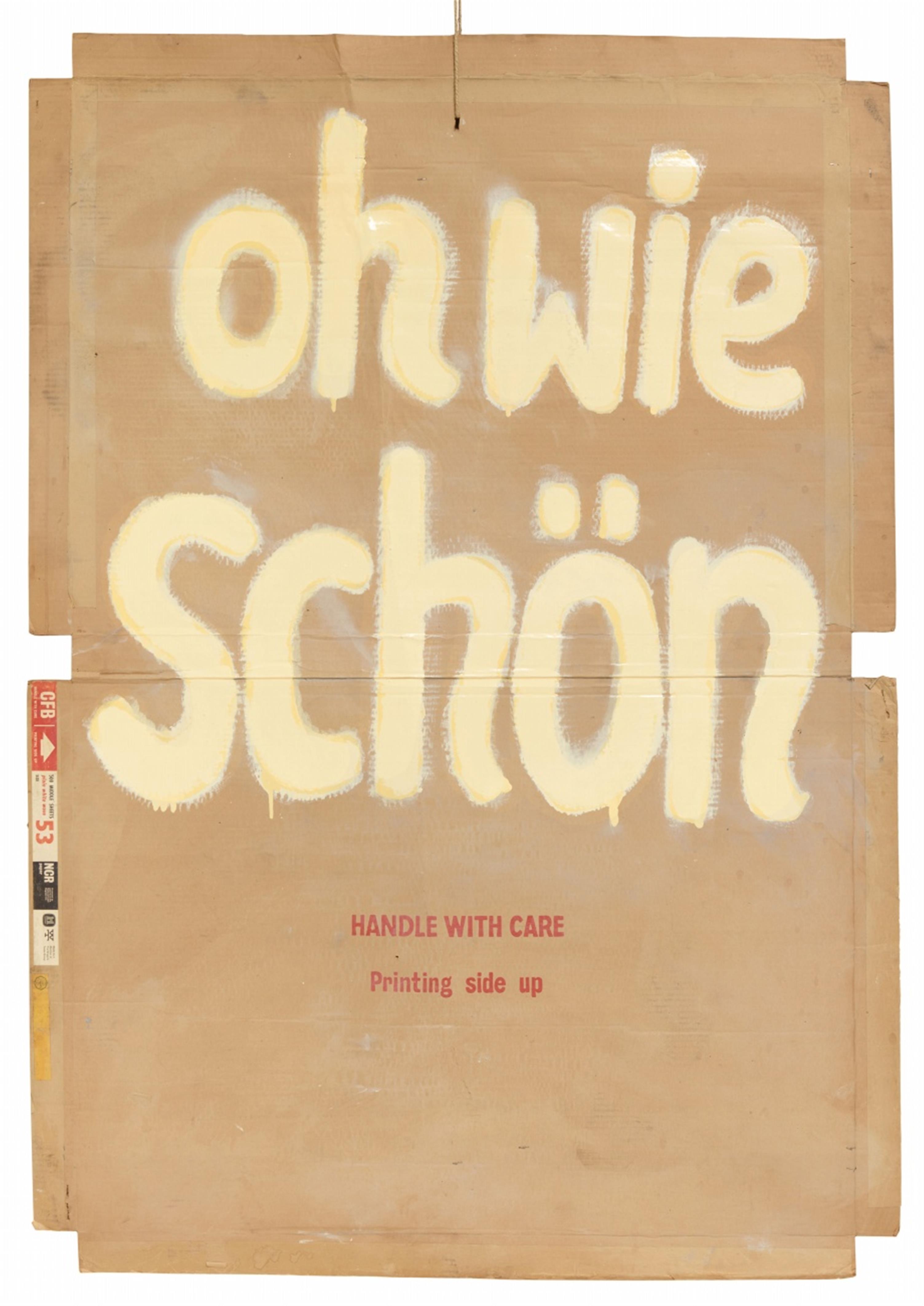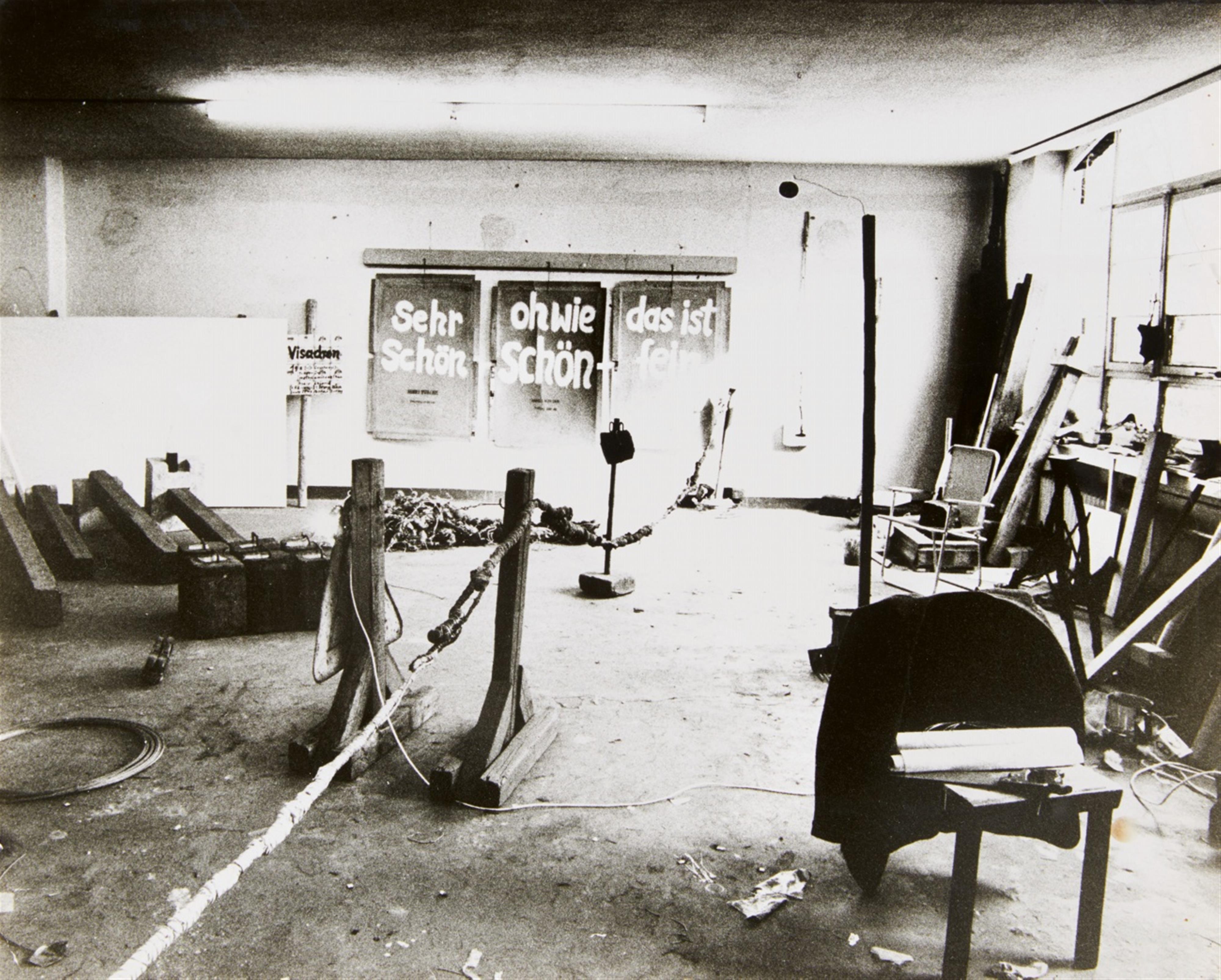C.O. Paeffgen
Sehr schön. Oh wie schön. Das ist fein
1969
Installation: acrylic on wooden beam and varnish on unfolded and used cardboard boxes with adhesive tape and staples. Each mounted to the beam with twine. Beam 13 x 312 x 6.5 cm. Cardboard each 139 x 97 cm. Overall dimensions 125 x 312 cm. Signed and dated 'C.O. Paeffgen Juli 69' on the back of the wooden beam. On each cardboard, titled 'sehr schön' and 'oh wie schön' and 'das ist fein'. Each signed and dated 'C.O. Paeffgen Juli 69' and 'C.O.P. Juli 69' and consecutively titled 'I', 'II' und 'III' verso. Additionally with notes 'bitte nicht knicken' (please do not bend) and one cardboard with the note 'danke C.O.' (thanks C.O.). - Traces of studio and minor traces of age.
Paeffgen uses three open boxes printed in red with "HANDLE WITH CARE / Printing side up" as a surface on which to laconically produce three exclamatory statements in yellow-beige paint with a thick paintbrush: "Sehr Schön oh wie schön das ist fein" (Very beautiful oh how beautiful that is lovely). The artist hangs the result with strips on a thick, pink-finished squared piece of timber, which in turn is fixed to the wall. What appears to be a refrain is a part of a complex of works that the artist continually reformulates such as the painting "Sehr Schön" (1969), with a flag in " Sehr Schön" (1969), a tightly written sheet with the word "Sehr" in the middle surrounded by "schön" a number of times, but also one "scheisse" (1969), a sheet-plastic flag "Sehr Schön" (1969), a nude drawing after Matisse "Sehr Schön" (2000), an object box with the back view of a nude from Ingres, (1969), and so on. The poetically-laden statement "Sehr Schön" becomes his artistic building block which wafts through the artist's work in many varieties and sequences and appears like a concept à la Paeffgen. Everything can be "sehr schön", the whole palette of his themes, there is no aesthetic hierarchy. The pure material of the cardboard box, however, stands alongside the favoured Carmen fruit crates, and is appreciated here in a sensitive way. Or is it actually to do with imaginary pictures, which Paeffgen no longer executes, but which he names succinctly and aptly with the expected commentary, thus also demonstrating against our unimaginative use of language in the contemplation of art? Everything is picture-perfect?
Or is Paeffgen reflecting the political charge of the student protest movement which started growing in the mid-1960s at the FU in Berlin: representation in the university bodies, the relationship between industrialised states and Third World countries, the Vietnam War, emergency legislation. On 2 June 1967, the FU student Benno Ohnesorg was shot by a detective at a demonstration against the shah of Persia. With this solitary, complex demonstration placard, Paeffgen is targeting the social achievements of the reconstruction as well as the demand for political maturity of those born after 1945. Not everything is beautiful in 1969!
MvL






